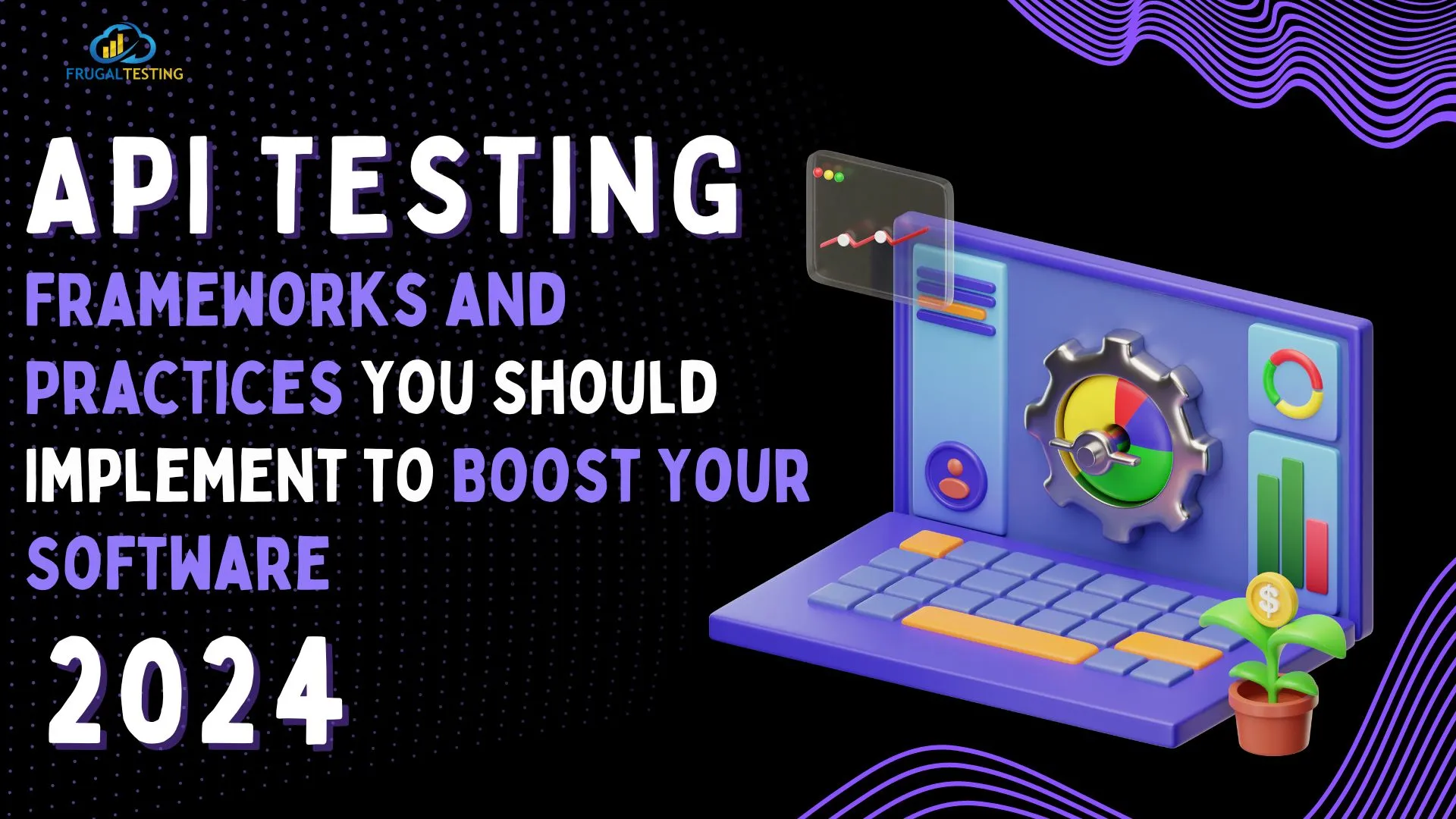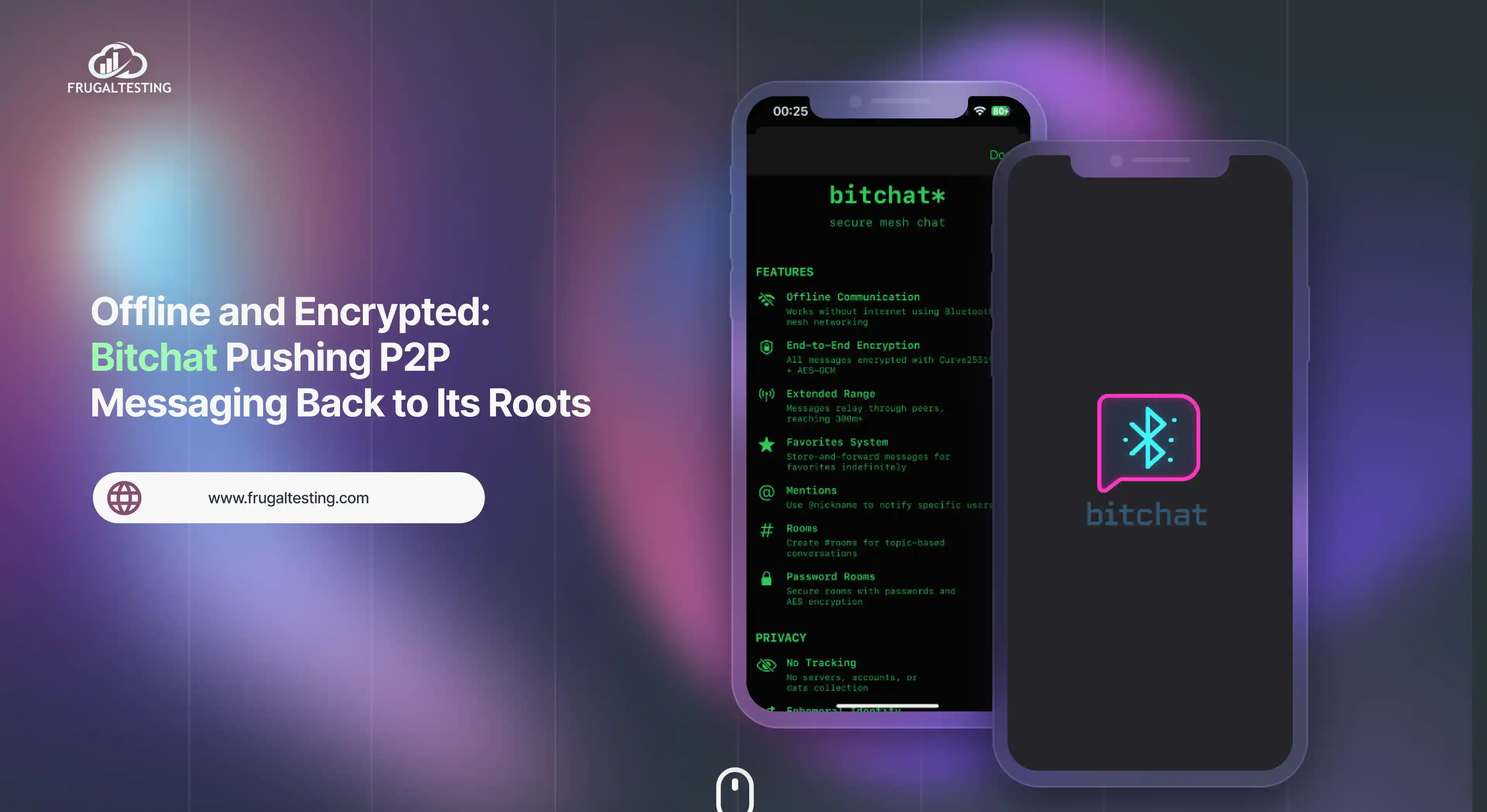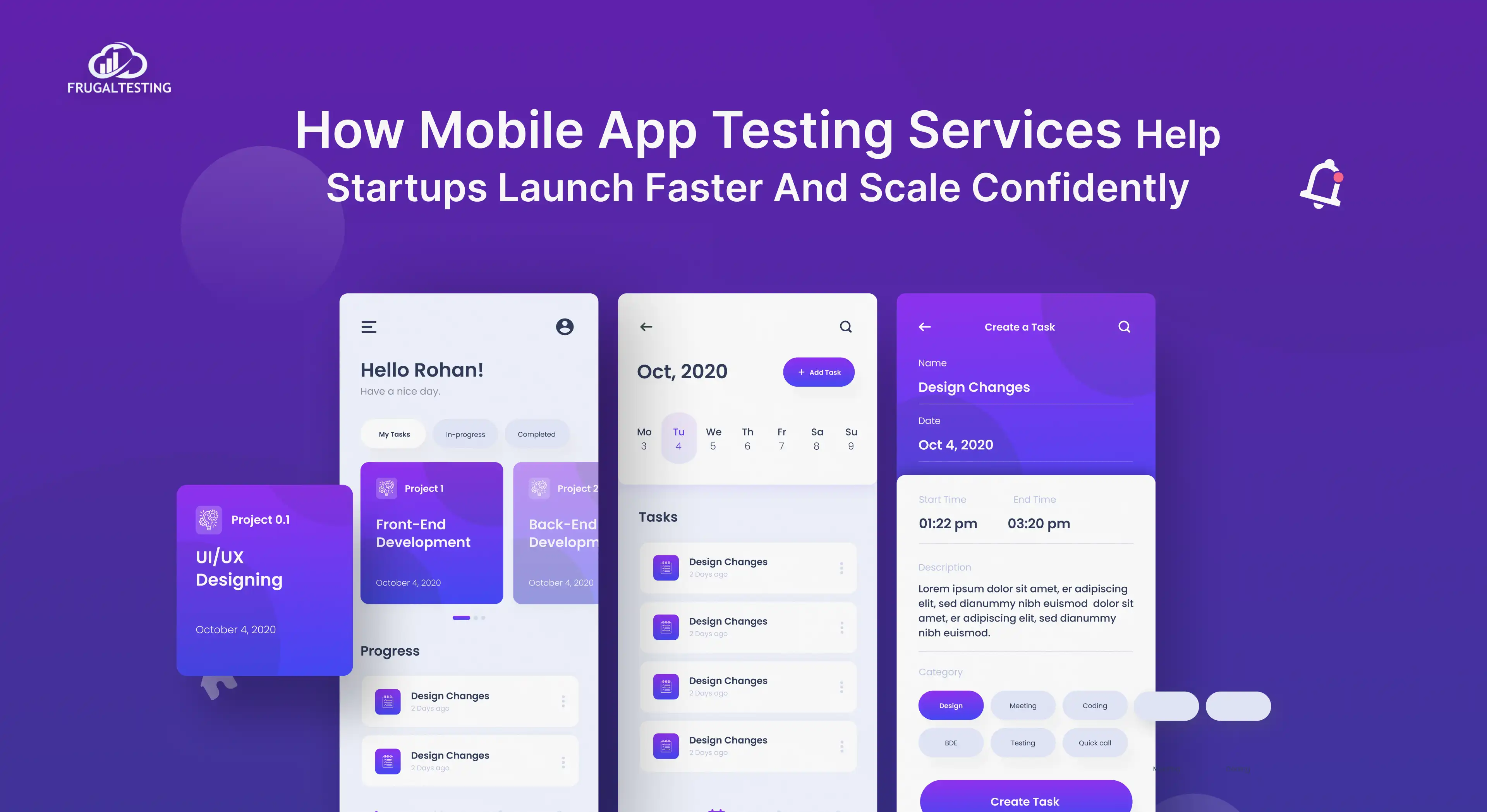Did you know that over 90% of executives consider APIs critically important? Discover the techniques and resources you need to properly utilize APIs by perusing our in-depth guide on API testing.🚀
In the blog parts that follow, we'll discuss:
📌 API Testing Methods and Frameworks: Testing scalability, reliability, and efficiency in software development may greatly increase by comprehending and implementing the different API testing methods and frameworks.
📌 Some examples of API test cases and types of testing: Analyzing intelligent instances of API test cases offers important insights into developing efficient test scenarios, confirming API functioning, and guaranteeing robust QA procedures.
📌 The significance of API testing: It guarantees the dependability, security, efficiency, and caliber of software programs. API testing is essential to contemporary software development since it verifies API functioning, manages various scenarios, and follows best practices.
📌 Tools for API testing and best practices: Implementing best practices in API testing ensures high-quality APIs and effective testing procedures. Several API testing tools are available for testing APIs effectively and guaranteeing their performance and quality, such as Frugal Testing, which has robust functionality and vast possibilities.
.webp)
Let's examine best practices, innovative frameworks, and cutting-edge methods to improve testing and guarantee unmatched accomplishment in your digital ventures! 💡
What is API Testing?
🔍 An application programming interface, or API, is an intuitive interface and is a means through which several software programs may interact and communicate with one another. API testing ensures data flows between various software components and produces the intended outcomes. The same way a waiter (API) takes your order to the kitchen and brings (your data) it to you in the way you anticipated.
Top 5 API Testing Methods: Frameworks You Should Try
🔍 Here are the best API testing methodologies and frameworks to maximize software development testing efficiency, scalability, and dependability. Let's examine the many API testing frameworks with special benefits and powerful features.
What are the Different Types of API Testing Frameworks
1. Frameworks for Unit Testing: Unit testing frameworks, like pytest for Python and JUnit for Java, concentrate on testing individual code units or components separately. These frameworks are mostly used for testing methods and functions, but they may also be used for API testing, confirming that methods and endpoints on the API perform as intended.
2. Scripting-Based Frameworks: Postman and SOAP APIs are scripting-based frameworks offering user-friendly graphical user interfaces (GUIs) for writing and running API test scripts. With the help of these frameworks, testers may create intricate test scenarios, manage authentication, and use programming languages like Groovy or JavaScript to automate API interactions.
3. Behavior-Driven Development (BDD) Frameworks: Human-readable domain-specific programming languages (DSLs), such as Gherkin, define test scenarios in BDD frameworks like Cucumber or SpecFlow. Through the ability to define and comprehend test scenarios in a non-technical language, these frameworks help stakeholders collaborate by promoting better communication and requirements validation.
4. Contract Testing Frameworks: Based on established contracts or specifications, contract testing frameworks, such as Pact or Spring Cloud Contract, check interactions between API users and providers. Testing teams can identify compatibility problems and efficiently enforce API contracts thanks to these frameworks, guaranteeing that API contracts are upheld and fulfilled across various services.
5. Frameworks for End-to-End (E2E) Testing: Frameworks for E2E testing, like Cypress or Selenium, verify an application's whole flow, including user-friendly interfaces, backend systems, and API-type interactions. These frameworks are mostly used for web application testing; however, integrating with API endpoints and confirming backend answers may also be used for API testing. 🌐
Teams may select the best framework for their unique testing requirements and project demands by investigating and utilizing these many API testing frameworks. Many teams use open-source frameworks like Postman, RestAssured, or Karate to validate status codes and other API behavior elements quickly and effectively. These frameworks also help organizations automate and streamline their API testing procedures. Open-source frameworks are excellent options for teams of all sizes because of their powerful features.
To further guarantee that the API responsiveness and performance match the required benchmarks, monitoring API traffic is helpful. These frameworks also provide powerful features for tailoring test processes and interacting with web and mobile application testing tools or services, thanks to their expandable plugin ecosystems and support for scripting languages like Groovy and JavaScript. The robust characteristics of open-source frameworks like Postman and RestAssured further help automation testing in API testing.
.webp)
Find the most Insightful API Test Case Examples
.webp)
💻 Here are a few sample API test cases that show different testing scenarios and methods, providing helpful advice for creating thorough API test suites.
🛠️ Positive Test Cases: Positive test cases confirm that APIs behave and perform as expected under typical operational circumstances. For instance, test a user authentication API endpoint using legitimate credentials to guarantee successful authentication and access to protected resources.
🛠️ Negative Test Cases: These test cases evaluate how APIs respond to edge cases, incorrect inputs, and error circumstances. For example, using expired or erroneous credentials to test the same user authentication API endpoint and confirm that the response codes and error handling are valid.
🛠️ Boundary Test Cases: Boundary test cases investigate how an API behaves when input ranges or limitations are approached. For example, testing an API endpoint to ensure proper handling of edge situations and boundary cases by providing the lowest and maximum numbers that can be entered numerically.
🛠️ Concurrency test cases: Concurrency test cases evaluate the response time of APIs to simultaneous or concurrent queries. For instance, modeling several concurrent users requesting access to an API endpoint to assess scalability, resource contention, and concurrency management.
🛠️ Load test cases: Load test cases assess an API's scalability and performance under anticipated load scenarios. For example, measuring response times, throughput, and resource consumption under load may be achieved by progressively increasing the number of concurrent queries to an API endpoint.
How is Automation Testing Related to API Testing?
API testing is one type of automation testing, which is an essential component of software development. Testing an application's APIs (application programming interfaces) includes examining how well they communicate and operate. This type of testing concentrates on confirming that APIs perform as intended, provide accurate results, and act as anticipated in various scenarios.
.webp)
Discover these Various API Testing Types
For software development to provide thorough test coverage and efficient quality assurance, it is vital to comprehend the variety of API testing kinds. Use these five key kinds to get into the subtleties of API testing.
Learn about these 5 Types of API Testing
🔵Functional Testing: By evaluating specific endpoints or API features, functional testing aims to confirm the fundamental functionality of APIs. Making sure that APIs function as intended and adhere to requirements entails making calls to API endpoints and comparing the replies to expected results. Functional tests are essential to guarantee the general dependability and accuracy of the API's behavior. Functional tests evaluate the functionality of an API by examining its numerous elements.
🔵Performance testing: It assesses an API's scalability, responsiveness, and dependability under varied load scenarios. Response times, throughput, and resource use are measured to locate performance bottlenecks and ensure that APIs can withstand anticipated traffic quantities without experiencing performance deterioration.
🔵Security testing: Security testing looks for flaws, vulnerabilities, and possible points of attack to evaluate the security posture of APIs. It entails assessing data encryption, input validation testing, permission restrictions, and authentication methods to ensure APIs can withstand security risks such as injection attacks, data breaches, and illegal access.
🔵Load testing: By submitting APIs to a predetermined load or traffic volume, load testing replicates real-world usage scenarios. Evaluate how well APIs function under high loads, which entails progressively increasing the number of concurrent users or requests. Load testing facilitates the identification of possible bottlenecks, scalability problems, and performance restrictions in API infrastructure.
🔵Interoperability testing: Validating the compatibility and interoperability of APIs across many platforms, devices, and contexts is known as interoperability testing. Guaranteeing consistent behavior and functioning across varied ecosystems entails testing APIs against various devices, operating systems, browsers, and network settings.
Why is API testing important?
💡 Given APIs' critical role in enabling data interchange and communication between various software components and systems, API testing is essential to modern software development. Let's explore the many benefits of API testing and why it's so crucial.
.webp)
🔵Functionality assurance and reliability: APIs are the foundation of many software programs, allowing different modules and services to user-friendly interface without interruption.
🔵Enhancement of Quality: By locating and resolving issues early in the development lifecycle, API testing is essential to improving the general quality of software products.
🔵Security validation: APIs are frequently used as access points to sensitive information and to carry out essential operations in software programs.
🔵Performance Optimization: The scalability and responsiveness of software programs are directly impacted by the performance of APIs.
🔵Integration testing: APIs make integrating various software components, systems, and services easier. API testing verifies that different platforms, environments, and use cases can utilize an API and are compatible.
To sum up, API testing is essential to producing software applications that are safe, dependable, performant, and of the highest caliber.
.webp)
Combining API testing with data-driven testing
Two key ideas in software testing are API testing and data-driven testing, which work well together to improve the efficacy and efficiency of testing procedures. Data-driven testing creates test cases that may be executed using input data sets.
Disadvantages and Advantages of API Testing
The advantages and disadvantages of API testing should be carefully addressed, just like with any testing strategy.
.webp)
📉 Advantages of Testing APIs:
- Early Bug Detection: API testing makes evaluating an application's operation possible without requiring a user-friendly interface. As a result, problems and faults may be found early on and typically fixed before they negatively affect user experience.
- Increased Test Coverage: API testing offers more comprehensive test coverage by directly evaluating the business logic and capabilities that the API exposes. This guarantees thorough testing of the program's functions and assists in identifying any problems in various circumstances.
- Faster Feedback Loop: Developers may get quicker feedback on the functionality of their code modifications by using API testing. This makes it possible to identify and fix problems more quickly, which speeds up iterations and shortens development cycles.
🤔 The disadvantages of API testing:
.webp)
- Limited View into User Experience: API testing mostly verifies backend functions, so it might not fully capture the user experience.
- Complexity of Test Setup: Configuring test environments, controlling dependencies, and handling authentication techniques are frequently necessary while setting up API testing.
- Dependency on Documentation: Accurate and current API documentation is essential for effective API testing.
.webp)
Top 5 Challenges in API Testing to Be Aware of
Starting an API testing project presents several issues that must be carefully considered and strategically resolved. These are the top five inherent obstacles of API testing, each of which calls for a different strategy to be resolved successfully.
.webp)
1. Dependency Management: Managing dependencies and guaranteeing their availability and consistency across testing environments provide substantial issues. API testing frequently entails reliance on external sources, such as databases or third-party services.
2. Data Management and Variability: Managing test data and guaranteeing repeatability are difficult due to the varied nature of the data handled by APIs.
3. Authentication and Authorization: Ensuring the security of authentication tokens and access control methods is difficult when testing APIs that need these steps.
4. Managing Asynchronous activities: Asynchronous activities include lengthy processes or event-driven systems, present timing, sequencing, and error-handling issues, reducing the error rates. These operations are frequently supported via APIs.
5. Versioning and Compatibility: Keeping up with versioning and backward compatibility gets difficult when APIs change over time. Versioning tactics must be carefully considered when testing across several API versions.
.webp)
Best Practices For API Testing
🤔 Optimizing test coverage, lowering risks, and providing high-caliber APIs that live up to user expectations depend on adopting best practices in API testing. To improve the efficiency of your testing procedures and the caliber of your APIs, let's examine the top ten best practices for API testing.
Top 10 of API Testing Best Practices
.webp)
🔵Start with Careful Planning: Take the time to fully comprehend the API's requirements, specs, and anticipated behaviors. To guarantee complete test coverage, create a detailed test strategy that includes data sets, success criteria, and test scenarios.
🔵Put Security Testing First: Security is crucial for API testing. To secure sensitive data and guard against potential vulnerabilities, use security testing techniques such as input validation, authentication, authorization, and encryption.
🔵Adopt Automation Framework Whenever It Is Practical: Automate time-consuming and repetitive test cases using automation frameworks and API testing tools to speed up testing cycles.
🔵Emphasize Functional Testing: Examine the API's functionality concerning specified requirements and use cases to confirm that it operates as intended. Use functional testing tools for streamline the process.
🔵Perform Regression testing: It should be done regularly to ensure that API upgrades or modifications don't damage current functionality or have unforeseen side effects.
🔵Conduct API Performance Testing: To guarantee scalability, dependability, and responsiveness, assess the API's performance under several load scenarios.
🔵Test Data and Results Should Be Thoroughly Documented: To promote knowledge sharing, traceability, and reproducibility among team members, test cases, data, and results should be thoroughly documented.
🔵Use Virtualization and Mocking: To mimic dependencies and isolate the API being tested from outside influences, use virtualization techniques or mock servers.
🔵Assure Cross-Platform and Cross-Browser Compatibility: To guarantee consistent behavior and user experience, confirm that the API is compatible with various operating systems, devices, and browsers.
🔵Continuous Monitoring and Feedback: To identify mistakes, abnormalities, and performance declines in real-time, constantly monitor production APIs.
.webp)
Which API Testing Tools Are Worth Considering?
📝 It could be intimidating to navigate the large field of API testing tools. However, by emphasizing scalability, simplicity of use, and dependability, a few exceptional choices surface. To help you test your APIs more efficiently and guarantee their quality and performance, this section will examine the best tools for API testing. These tools provide extensive capabilities and strong functionality.
API Testing Tool Shootout: Which One Performs Best?
✅ Examining the subtleties of every tool (including open-source tools) means finding out about things like how easy it is to use the user-friendly interface, how automated it can be, how well it supports different protocols like REST APIs, SOAP APIs, and GraphQL, how reliable it is in managing complicated situations, how well it integrates with your current development environment, and more.
✅ API test scripts are incorporated into the CI/CD pipeline as part of continuous integration (CI). Seamless integration with development and CI/CD pipelines ensures that APIs are thoroughly tested at every stage of the software development lifecycle.
✅ Every tool (including the popular API testing tools) has advantages and disadvantages. Postman and SoapUI are well-known for their vast feature sets and widespread use. At the same time, Insomnia and Karate are more recent players focusing on emerging trends like BDD (behavior-driven development) and creative approaches.
.webp)
While Postman and Insomnia are excellent at testing RESTful APIs, with their user-friendly processes and feature sets specifically designed for REST-based interactions, SoapUI has long been regarded for its broad support for SOAP-based services.
Ultimately, you can provide your software development team or the testing team with the ideal tool that aligns with your project goals by conducting a thorough shootout and considering factors like ease of use, scalability, versatility, and community support. This will speed up your testing processes and strengthen the quality and reliability of your APIs.
Explore our offering on API Testing Service
📝 We are very satisfied with providing outstanding API testing solutions customized to your needs at Frugal Testing. To offer you trust in your digital products and peace of mind, our extensive services are made to guarantee the functionality, security, and dependability of your APIs.
.webp)
More Services You Can Check Out
✅ To guarantee seamless integration with your apps, our staff carefully reviews every part of your workflow to find discrepancies and any functionality issues.
Identifying vulnerabilities, performance bottlenecks, and potential security concerns is the main emphasis of our services, which include a thorough review of your APIs and other aspects. We assist you in risk mitigation and digital asset protection against breaches by conducting comprehensive testing.
People Also Ask
🔵Why is API needed?
APIs are necessary to provide smooth data, functionality, service sharing, communication, and interaction across various software systems.
🔵What is the future scope of API tester?
As API ecosystems become more sophisticated and reliable, API testers must adapt to new technologies like microservices and the Internet of Things. They will also need to become proficient with automation testing and security testing tools.
🔵Is API testing manual or automated?
API testing may be done manually or automatically, with automation becoming increasingly popular over manual testing due to its efficiency, scalability, and capacity to manage regression testing and repetitive operations.
🔵Which tool is mostly used for API testing?
Being one of the most often used tools for API testing because of its strong capabilities, user-friendly design, and wide support for testing different kinds of APIs, Frugal Testing offers solutions for API testing.





%201.webp)

